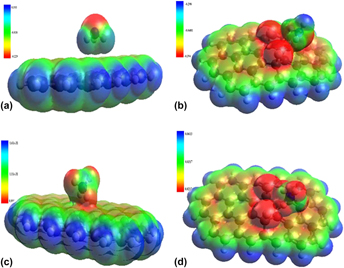Crossref Citations
This article has been cited by the following publications. This list is generated based on data provided by
Crossref.
2017.
Errata.
Journal of Materials Research,
Vol. 32,
Issue. 12,
p.
2447.
Zeller, Patrick
Amati, Matteo
Sezen, Hikmet
Scardamaglia, Mattia
Struzzi, Claudia
Bittencourt, Carla
Lantz, Gabriel
Hajlaoui, Mahdi
Papalazarou, Evangelos
Marino, Marsi
Fanetti, Mattia
Ambrosini, Stefano
Rubini, Silvia
and
Gregoratti, Luca
2018.
Scanning Photoelectron Spectro‐Microscopy: A Modern Tool for the Study of Materials at the Nanoscale.
physica status solidi (a),
Vol. 215,
Issue. 19,
Sharma, Rahul
Biroju, Ravi K.
Sinai, Ofer
Cohen, Hagai
Sahoo, Krishna Rani
Artel, Vlada
Alon, Hadas
Levi, Adi
Subrahmanyam, A.
Theis, Wolfgang
Naveh, Doron
and
Narayanan, Tharangattu N.
2018.
Vapour transport deposition of fluorographene oxide films and electro-optical device applications.
Applied Materials Today,
Vol. 13,
Issue. ,
p.
387.
Belenkov, M E
Chernov, V M
and
Belenkov, E A
2019.
Simulation of the structure and electronic properties of fluorographene polymorphs formed on the basis of 4-8 graphene.
IOP Conference Series: Materials Science and Engineering,
Vol. 537,
Issue. 2,
p.
022058.
Fatemi, S. Mahmood
and
Fatemi, Seyed Jamilaldin
2020.
Current investigations in theoretical studies of nanostructure–liquid interfaces.
Chinese Journal of Physics,
Vol. 65,
Issue. ,
p.
93.
Li, Yulong
Cheng, Jingliang
Wang, Xu
Liu, Yang
and
Liu, Xiangyang
2021.
Thermal stability of C–F/C(–F)2 bonds in fluorinated graphene detected by in situ heating infrared spectroscopy.
Physical Chemistry Chemical Physics,
Vol. 23,
Issue. 47,
p.
26853.
Chen, X.
Wang, M.
Cheng, J.
Zhao, C.
and
Tang, Z.
2023.
High thermal conductivity, good electrical insulation, and excellent flexibility of FGN/PVA films based on a large sheet and narrow diameter distribution of fluorographene.
Materials Today Chemistry,
Vol. 29,
Issue. ,
p.
101422.
Zhang, Lili
Zhang, Zhengrui
Gao, Xi’an
Matlan, Siti Jahara
and
Taha, Nazaruddin Abd
2023.
The Preparations of Fluorographene Nanosheets and Research in Tribological Properties in High Vacuum.
Materials,
Vol. 16,
Issue. 11,
p.
3929.
Chaskar, Atul
Walke, Pravin
Wakchoure, Devyani
and
Shenoy, Dhriti
2024.
Electrochemical Exfoliation of Graphene and Its Derivatives.
p.
161.
Yadav, Preeti
Thakur, Pallavi
Maity, Dipak
and
Narayanan, Tharangattu N.
2024.
High Rate, Dendrite Free Lithium Metal Batteries of Extended Cyclability via a Scalable Separator Modification Approach.
Small,
Vol. 20,
Issue. 19,
Malesys, V
Duan, T
Denys, E
Li, Hu
Leifer, K
and
Simon, L
2025.
E-beam fluorinated CVD graphene: in-situ XPS study on stability and NH3 adsorption doping effect.
Nanotechnology,
Vol. 36,
Issue. 9,
p.
095701.
Feng, Wei
2025.
Carbon Fluorides.
p.
1.
Toumlilin, A
Houmad, M
Ribag, K
Kaddar, Y
Benyoussef, A
and
Kenz, A El
2025.
Unveiling the potential of HF and CO molecules adsorption on fluorographene as a gas sensor: DFT insights.
Journal of Physics D: Applied Physics,
Vol. 58,
Issue. 15,
p.
155302.
